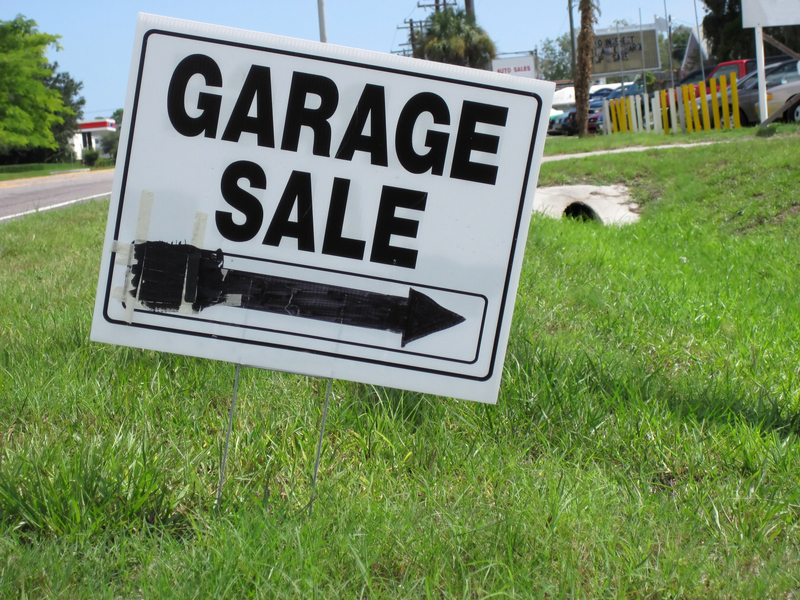Unlock the Recycling Potential of Your Old Wardrobe
Have you ever stood in front of your overflowing closet and wondered what to do with all those clothes you no longer wear? Most of us experience the dilemma of a crowded wardrobe full of items that have served their purpose but are too good to simply throw away. Instead of consigning your clothes to landfill, why not unlock the recycling potential of your old wardrobe? With a little creativity and awareness, anyone can transform unwanted garments into valuable resources, help the environment, and even support worthy causes.

Why Should You Recycle Your Wardrobe?
Recognizing the potential of wardrobe recycling is crucial in today's fashion-conscious world. The fast fashion industry is one of the largest contributors to environmental pollution, consuming vast amounts of water and generating mountains of waste. According to the Environmental Protection Agency (EPA), over 11 million tons of textile waste end up in landfills each year in the United States alone. By taking steps to recycle, upcycle, or donate your clothes, you can directly reduce this impact and play a vital role in creating a more sustainable planet.
Environmental Benefits of Wardrobe Recycling
- Conserves natural resources by reducing the demand for new raw materials.
- Lowers greenhouse gas emissions associated with textile production.
- Reduces landfill waste and the harmful methane gas released during decomposition.
- Minimizes water and chemical use needed to produce new clothing.
Assessing the Recycling Potential of Your Old Clothes
Before you start clearing out your wardrobe, it's important to evaluate each item. Consider the following:
- Condition of the garment: Is it gently used, stained, ripped, faded, or misshapen?
- Material composition: Natural fibers like cotton and wool are generally easier to recycle than synthetics like polyester.
- Emotional value: Some clothes may have sentimental significance and could be repurposed creatively.
Tip: Items in good condition have the highest recycling or donation potential, while heavily worn items may be suitable for upcycling or textile recycling schemes.
Unlocking Recycling Possibilities: Options for Your Old Wardrobe
Unlocking the full recycling potential of your old wardrobe involves exploring various avenues beyond simply tossing clothes into a donation bin. Let's explore them in detail:
1. Donate Gently Used Clothes
Perhaps the most direct way to extend the life of your clothing is through donation. Charities, shelters, and secondhand stores welcome clean, wearable garments. When you donate:
- You help those in need or support nonprofit initiatives.
- You promote a circular economy, giving clothes new life while reducing waste.
- You make sustainable shopping possible for others.
Pro Tip: Be mindful to donate only clean and undamaged clothing -- if possible, wash and fold items before handing them in.
2. Sell or Swap Your Preloved Clothes
For fashionistas or anyone seeking a little extra cash, selling unwanted clothes online is another excellent option. Explore:
- Online marketplaces like eBay, Depop, Poshmark, Vinted, and ThredUp.
- Local swap events and clothing exchange parties, which promote sustainable style swaps within your community.
- Consignment shops, boutiques, and pop-up thrift markets.
These methods not only provide monetary or wardrobe refresh benefits, but also keep clothing in use for longer, maximizing their recycling potential.
3. Upcycle and Repurpose Old Clothing
Unleashing your creativity can turn tired clothes into something new and unique. Upcycling is all about giving a new purpose to your clothing, regardless of its age or flaws. Here are some innovative ideas:
- Transform old t-shirts into tote bags, cushion covers, or cleaning rags.
- Convert jeans into shorts, aprons, or quilt patches.
- Patchwork projects for blankets, scarves, or even trendy patchwork clothing.
- Accessory creation -- turn scraps into headbands, bracelets, or jewelry.
*Upcycling not only reduces waste but also lets you embrace one-of-a-kind, personalized fashion.*
4. Textile Recycling Programs
For clothes that are beyond wear and tear, specialized textile recycling schemes offer a sustainable solution. Many municipalities and retailers now offer collection points for unwanted textiles.
- Retailer take-back programs (e.g., H&M's Garment Collecting or Levi's recycling initiatives).
- Local recycling centers with textile bins or drop-off points.
- Nonprofit organizations focused on large-scale textile sorting and recycling.
These programs recover fibers for industrial uses, such as padding, insulation, or even making new fabrics -- truly unlocking the hidden potential of your old wardrobe.
5. Compost Natural Fibers
Did you know that garments made from 100% natural fibers (like cotton, wool, linen, or silk) can be composted?
- Remove any synthetic elements (labels, zippers, and buttons) before composting.
- Shred the fabric for faster decomposition.
- Mix with other organic material in your compost pile.
This method returns nutrients to the soil and is another innovative way to recycle your old clothes.
How to Make Wardrobe Recycling a Habit
Unlocking the recycling potential of your closet doesn't have to be a one-time activity. By adopting a sustainable approach to clothing management, you can ensure your wardrobe remains eco-friendly year after year.
Implement a "One In, One Out" Rule
Each time you buy a new garment, commit to removing one existing item from your wardrobe. This prevents closet clutter and encourages a mindful approach to fashion consumption.
Organize Seasonal Clean-outs
Schedule regular wardrobe audits -- ideally with each change of season. Assess which clothes you haven't worn in months and sort them into "keep," "donate," "sell," or "upcycle" piles.
Educate Yourself About Clothing Materials
Understand the recyclability of various fabrics. Natural fibers are usually biodegradable or easily repurposed, while synthetics may require more specific recycling channels.
Support Brands with Sustainable Initiatives
Many fashion brands have introduced take-back or recycling programs. By buying from and returning clothes to these companies, you contribute to a closed-loop fashion system.
Addressing Common Concerns About Wardrobe Recycling
Is Clothing Recycling Worth the Effort?
Absolutely! By recycling your old wardrobe, you reduce the environmental burden created by "throw-away" culture, save valuable resources, and help build a more sustainable future.
Does All Donated Clothing Get Reused?
While not every item is resold in local thrift shops, most charities partner with global textile recyclers who process non-sellable clothing into industrial materials. Very little ends up as waste.
Are There Items That Cannot Be Recycled?
- Clothes contaminated with oil or chemical spills are not suitable for recycling or donation.
- Items with heavy mold or mildew should be disposed of responsibly (consult your local waste guidelines).
- Beyond these exceptions, most textiles can find new uses if processed properly.
Inspiring Examples of Wardrobe Recycling in Action
Community Clothing Swaps
Many neighborhoods now host regular clothing exchange events. Participants bring their unwanted clothes and swap with others, creating a community-driven circular fashion ecosystem.Artist-Led Upcycling Projects
Some designers use fabric scraps and old jeans to craft stunning new collections, from patchwork jackets to art installations, highlighting the creative recycling potential of discarded fashion.Innovative Textile Recycling Companies
Brands like Worn Again Technologies and Renewcell are developing closed-loop recycling systems that turn old clothes into new fibers, paving the way for a sustainable, circular fashion industry.
Simple Steps: How to Recycle Your Wardrobe Today
- Sort your clothing by condition, fabric, and purpose.
- Research local donation centers, recycling drop-off points, or online resale platforms.
- Bundle up items by category for easier processing (e.g., shoes, denim, t-shirts).
- Clean, fold, and prepare your donations or recycling piles.
- Share your recycling journey on social media to inspire others.
Conclusion: Unlocking the Hidden Value of Your Clothes
Every piece of clothing in your closet, no matter how old or outdated, has the potential to be part of the global solution to fashion waste. By recognizing and unlocking the recycling potential of your old wardrobe, you help reduce environmental damage, keep valuable resources in circulation, and support a healthier planet.
Whether through donation, resale, upcycling, or textile recycling, every step you take toward wardrobe recycling is a positive one. Start today, and let your clothes make a lasting impact -- far beyond your wardrobe doors!